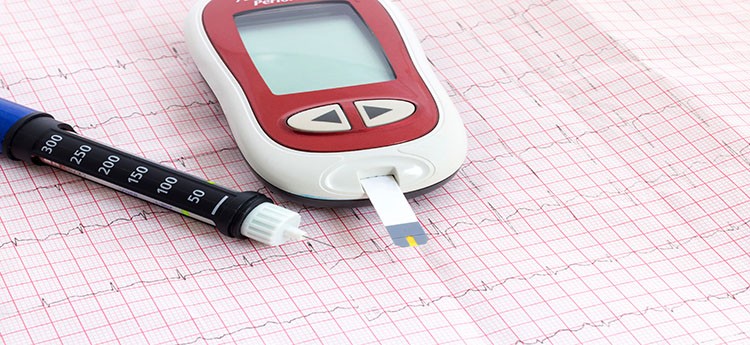The Impact of Preanalytical Variables on Sample Quality in Point of Care Testing
By Dr. Aparna Jha Ahuja, Director, Medical Affairs, BD Life Sciences – Preanalytical Systems, Franklin Lakes, NJ USA , 2 May 2017
Point of care testing (POCT) is defined as any testing that is not conducted in the core laboratory, or a “core-like” laboratory, or testing performed at the bedside, clinic, or by the patients themselves at home.
Although there have been many advancements in POCT over the past few decades, some forms were practiced as far back as the Middle Ages, where physicians used a portable chemical urine kit at the patient’s bedside to perform urine testing for diabetes. The first true POCT device was the development of the urine dipstick in 1957. Three decades later, simple handheld glucose meters were designed for self-monitoring of blood glucose, which is the most widely performed POCT. In addition to glucose, other laboratory tests that are performed using POCT are listed in Table 1.
| Table 1. Commonly Performed POC Tests | |
|---|---|
| Glucose testing | Cardiac markers (e.g., troponin) |
| Blood gases | Hemoglobin |
| Electrolytes | Dipstick urinalysis |
| Coagulation testing (prothrombin time, international normalized ratio) | Urine pregnancy testing |
| Fecal occult blood | Infectious diseases (e.g., Influenza, Rapid Strep, HIV) |
The most significant advantage of POCT over central laboratory testing is the rapid availability of results, which contributes to faster diagnosis and treatment and possible reduction in the length of hospital stay. Sample transport time is eliminated or reduced, contributing to the faster receipt of results and with fewer concerns related to sample stability. Sample collection for some tests is simplified by the use of POCT, as whole blood can be used instead of plasma. This results in a shorter preanalytical phase, as there is no special sample preparation and there are fewer labour-intensive steps than in the central laboratory. In addition, smaller volumes of blood are required for POCT.
Preanalytical Variables in POCT and Their Impact on Test Results
The contribution of laboratory services to patient care plays a key role within the health system. Although the laboratory approximately spends only up to 10% of the total hospital budget, it delivers almost 70% of the diagnostic information per patient. With this in mind, it is quite understandable that laboratory errors may have serious consequences to patient health and outcome. Laboratory error is a defect occurring in any part of the laboratory testing cycle: test ordering, test requesting, patient preparation, patient identification, sampling, sample transport and delivery to the laboratory, centrifugation, analysis, reporting and interpretation of results. As described in the literature, most errors occur in the analytical or preanalytical phase (32%, 65.3%, respectively), with only a small percentage of these occurring in the post analytical phase (2.7%).
Although there are fewer steps required for POCT as compared to the core laboratory, the potential for errors still exists. As with any medical procedure, patient or specimen misidentification is a major source of error. Many POCT devices have built‐in scanners to facilitate bedside patient identification. Manual entry of the patient’s information may contribute to identification errors. The small size of the specimen container in POCT can limit the space for label placement. Additionally, the urgent nature of specimens that are drawn for Stat testing may not be conducive for proper labelling. Assigning the wrong patient’s name to a sample can lead to harmful consequences or even death, especially if the incorrect medication or treatment is administered to a patient.
Squeezing or “milking” the puncture site may result in hemolysis of the specimen and falsely decrease some parameters due to dilution of the specimen with extracellular fluids and subsequent contamination. As in the core laboratory, even slightly hemolyzed specimens impact certain analytes, such as potassium, magnesium, phosphorus and lactate dehydrogenase.
The presence of air bubbles in arterial samples may cause analyte bias in blood gas measurements, particularly for pCO2 and pO2 results.Hemoglobin levels may be affected if there is insufficient blood volume resulting from inadequate filling of the cartridge. For glucose testing, failure to tightly cap vials of test strips can lead to exposure to air, light, and humidity, which degrade the performance of the test strips.
Variability in test results can be observed between different sample types (capillary versus venous). One recent study showed variability between successive drops of capillary blood compared with drops of venous blood for hemoglobin, white blood cells, and platelets.
Further, errors in international normalized ratio (INR) may be caused by squeezing the finger too hard when obtaining a drop of blood, which may accelerate blood clotting and result in a low INR. As with glucose test strips, improper storage of the test strips can also contribute to incorrect INR results.
Most POCT requires sample collection into a capillary tube and transfer to a test cartridge. This presents the opportunity for splashing and blood contact when removing the cap from the evacuated tube.
Why Do These Errors Occur in POCT?
Testing in the core laboratory is conducted under strict standards of quality control and preanalytical factors that may impact sample integrity (e.g., hemolysis, lipemia, icterus) are often readily apparent. In POCT, these errors may not be detected when whole blood is used or in POCT systems without a defined mechanism for assessing sample integrity.
Also, POCT may be conducted by healthcare personnel who may not have the same training or expertise as laboratory professionals and in diverse clinical environments (e.g., in clinics, physicians’ offices, Emergency Department or Intensive/Critical Care Units). Hence, tests may be performed inaccurately or the instruments may not be verified to ensure proper calibration, which may give unreliable results.
Moreover, testing is usually done in patients receiving various medications and fluids in which sampling is done repeatedly in a non-fasting state and at different time points during the day.
Error Reduction in POCT
Errors can be minimised by:
- Understanding the sources of preanalytical variability
- Improving collection practices by developing standard operating procedures (SOPs)
- Adhering to the instrument manufacturers’ instructions for use
- Coordinating staff training with periodic competency assessments
- Creating quality indicators for testing (e.g., specimen rejection, inaccurate or inadequate information, hemolysis)
- Monitoring the collection procedure to ensure compliance with SOPs
- Reporting data on the incidence of errors
- Incorporating error detection systems into current instruments
- Periodic audit of the overall POCT program to include patient care outcomes
It must be emphasised that the overall quality of the total testing process in POCT is best taken care of by the laboratory.
Conclusion
Point of care testing will continue its growth as more and more tests are added to the testing menu and new analyzers are introduced into the market. While POCT offers advantages over the core laboratory, specifically faster turnaround time and lower sample volumes, it does not preclude the potential for errors. As in both testing scenarios, quality samples contribute to quality results. The risk of errors may be minimised by simplifying and standardising the processes, implementing process automation, whenever possible, and continuing education for all of those who are involved in POCT. Raising awareness of the steps in the collection and testing process that could lead to errors can help reduce them and ensure that the reported test results represent the patient’s true clinical status.
References
References available on request.
BOX ITEM
POCT at MEDLAB 2017
- Philip Weihser, Service Manager, Emergency Division, James Paget University Hospitals, NHS Foundation Trust, Great Yarmouth, UK, will be speaking on ‘Utilising POCT and service redesign to establish an ambulatory emergency care service’ on Feb 6 at 11am.
- Najwa Adlan, CPHQ Medical Laboratory supervisor, POCT Department of Pathology & Laboratory Medicine will be speaking on ‘Impact of pre-analytical errors and variables on POCT results’ on Feb 9 at 10am and ‘POCT analytical performance compared to tests offered by the laboratory’ at 11.30am.
Dr Gurdeep Dhatt, Chairman Laboratory Medicine Consultant Clinical Chemistry, Tawam Hospital, Al Ain, UAE will be speaking on ‘Expanding POCT from a hospital based setting to the community and patient centred care’ on Feb 9 at 10.30am.

































